Sound art: a note on the Colin Fallows Ensemble’s Reverbs
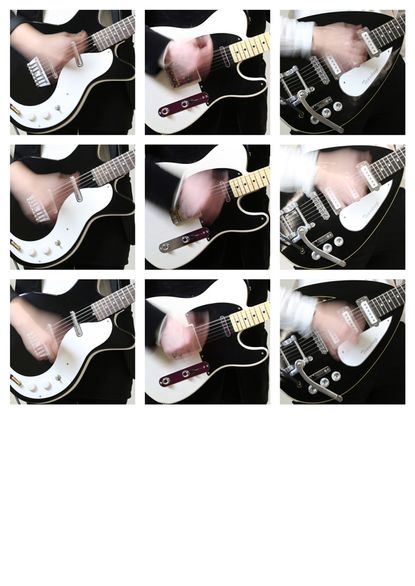
Colin Fallows – professor of sound and visual arts at Liverpool John Moores University – is the curator behind the London Wilkinson Gallery's 'Sex Pistols, April 1976: The Art of PTMADDEN'.
An artist and curator whose research explores crossovers between sound and the visual arts, Fallows has produced soundworks for live ensemble performance, recordings, exhibitions and installations, radio and the internet, and his artistic and curatorial projects have featured in numerous festivals, galleries and museums worldwide.
He also leads the Colin Fallows Ensemble, an electric guitar trio dedicated to the performance of multi-layered soundworks, dense with microtones which generate numerous overtones through bespoke tuning to resonant performance spaces. The members of the ensemble are Colin Fallows, Bee Hughes and Eva Petersen; its performances combine the precision and clarity of a string trio with the locomotive power of a noise-machine orchestra.
The CFE performed Reverbs, a series of related compositions by Fallows for prepared and treated electric guitars, throughout 2015 at the Wilkinson Gallery, staged in collaboration with the Boudicca fashion house and recorded in ambisonic surround-sound by the British Library Sound Archive.
Below, listen to a clip of the Ensemble performing at the gallery in Decemeber 2015 – entitled Twenty Three In A (2016) – before culture writer and novelist Michael Bracewell delves deep into sonic space to give Wallpaper* an inside analysis of the Reverbs series:
Somewhere not too deep within the principle of the Colin Fallows Ensemble seems to lie the virtue of tension – in this case a précis of Stravinsky’s observation that constraint in the creative process will paradoxically enable artistic liberation. Here is a tension of opposites: from rigid discipline, from artistic organisation, comes formal urgency and originality.
To begin at the beginning: when playing, the CFE present themselves in a restrained manner; as figures within the installation of their performance, they are stylishly but neatly dressed. A hair’s breadth from dandyism (the high dandyism of Kraftwerk for example) this conservatism appears to perform a function within the work: sartorial restraint, coupled with the object fetishism of the Ensemble’s vintage electric guitars and beautifully crafted amps, carefully aligned, creates a tautness.
This tautness, pre-playing, becomes acoustic; the sonic space becomes as charged as the heavy summer air before an electrical storm. Informality or liberalism of any kind would weaken this effect. All must appear natural, amiable (a creative strategy likewise employed by Gilbert & George) yet controlled, organised, calm. For the Ensemble, these qualities – neatness, control, discipline, calm – seem also to assist their subsequent playing to create a dialogue with the space in which they are playing.
For the listener, the first incision made by the Ensemble’s sound into the 'tidied' acoustic space may seem pulverising and anarchic. A brutal clamour of electric guitar noise that over time begins to separate, in the hearing, into what sound like strata of reverberation. A comparison might be with the peel of bells (while bringing to mind Brian Eno’s sonic imaginings of, for instance, the sound of a glass bell that is seven miles wide); likewise with post-punk and noise-punk explorations of repetition and critical mass.
And yet the CFE appear less concerned with the relationship of their playing to ‘music’ than its sculptural malleability and its affinity to abstraction. As the Ensemble’s playing creates drones and over-tones – mists, aura and dense furrows of sound that are at once resonant, persistent and semi-illusory – so these sonic effects, resultant on rigidity and tension, might resemble the 'movement' and migrations of shapes and colours in op art, most famously the metrical and meticulously formulated abstraction of Bridget Riley.
In what Riley has termed the 'pacing' of forms, shapes, colours and tones, a rhythm is established within the composition of her work that creates its own movement, shimmer and optic effect. Lines, curves or geometric forms can appear to move inwards, create their own declivities, falls, horizontal, vertical or diagonal shifts – these 'movements', apparently autonomous and independent, are created by the artwork rather than within the artwork. When looking at the art of Bridget Riley, the viewer seems reflexively to search for a place with the picture plane where the gaze can rest, focus and take its bearings, optically. The composition of the work then denies this. All is already in flow and motion; thus the viewer’s gaze is caught and carried, as though by a strong current, rather than offered a static or neutral point of commencement from which to proceed with the act of looking.
The listener seems to have a similar experience when hearing the Reverbs of the Colin Fallows Ensemble. There seems to be no place on which the experience of hearing can rest, or ‘begin’; rather, a continuum of sound which in turn – by way of form, density, volume, speed – creates its own autonomous internal shifts or apparitions of movement. Rigidity and formality become the agents of sonic and optical metamorphoses and liberation. Thus, in one sense, an artwork by Riley – her epic lyrical painting, Late Morning (1967–68), for example – might be likened to a score, in which 'pacing' and repetition create layers and over-layers of movement and tonal value.
The Colin Fallows Ensemble thus deploy formality and discipline to constrain and compress intense fronts and clamours of sound, these sonic densities in their turn seeming to create their own internal variations. The circuitry of the Ensemble’s creative process is also routed through, or sealed by, their relationship to the space in which they play. Venue – its history, ambience, dimension, function – is regarded by the Ensemble as a major informant of the completed work, both acoustically and contextually.
Implicit in the term ‘reverb’ are the notions of both resonance and time travel (the transmission of a sound from an earlier point in time to the instant of hearing, and then potentially onward); Wikipedia usefully and accurately employs the terms ‘amplitude’ and ‘reflection’ to describe the sonic processes of reverb. The capacity and temper of these terms is the principal preoccupation of the Colin Fallows Ensemble.
INFORMATION
Audio recorded live 15 December 2015 at Wilkinson Gallery, London; recorded by the British Library Sound Archive.
Photography courtesy Colin Fallows Ensemble
Wallpaper* Newsletter
Receive our daily digest of inspiration, escapism and design stories from around the world direct to your inbox
-
 Crispin at Studio Voltaire, in Clapham, is a feast for all the senses
Crispin at Studio Voltaire, in Clapham, is a feast for all the sensesNew restaurant Crispin at Studio Voltaire is the latest opening from the brains behind Bistro Freddie and Bar Crispin, with interiors by Jermaine Gallagher
By Billie Brand Published
-
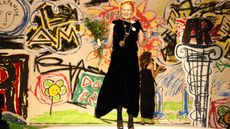 Vivienne Westwood’s personal wardrobe goes up for sale in landmark Christie’s auction
Vivienne Westwood’s personal wardrobe goes up for sale in landmark Christie’s auctionThe proceeds of ’Vivienne Westwood: The Personal Collection’, running this June, will go to the charitable causes she championed during her lifetime
By Jack Moss Published
-
 Montblanc’s leather goods evolution offers peak style
Montblanc’s leather goods evolution offers peak styleMontblanc takes design inspiration from its iconic writing archive for new collections of leather goods
By Simon Mills Published
-
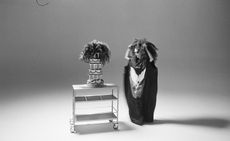 Kembra Pfahler revisits ‘The Manual of Action’ for CIRCA
Kembra Pfahler revisits ‘The Manual of Action’ for CIRCAArtist Kembra Pfahler will lead a series of classes in person and online, with a short film streamed from Piccadilly Circus in London, as well as in Berlin, Milan and Seoul, over three months until 30 June 2024
By Zoe Whitfield Published
-
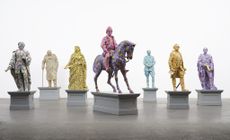 Yinka Shonibare considers the tangled relationship between Africa and Europe at Serpentine South
Yinka Shonibare considers the tangled relationship between Africa and Europe at Serpentine SouthYinka Shonibare‘s ‘Suspended States’ at Serpentine South, London, considers history, refuge and humanitarian support (until 1 September 2024)
By Tianna Williams Published
-
 Gavin Turk subverts still-life painting and says: ‘We are what we throw away’
Gavin Turk subverts still-life painting and says: ‘We are what we throw away’Gavin Turk considers wasteful consumer culture in ‘The Conspiracy of Blindness’ at Ben Brown Fine Arts, London
By Rowland Bagnall Published
-
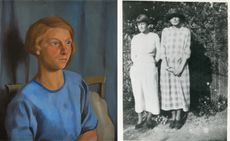 Dorothy Hepworth and Patricia Preece: Bloomsbury’s untold story
Dorothy Hepworth and Patricia Preece: Bloomsbury’s untold story‘Dorothy Hepworth and Patricia Preece: An Untold Story’ is a new exhibition at Charleston in Lewes, UK, that charts the duo's creative legacy
By Katie Tobin Published
-
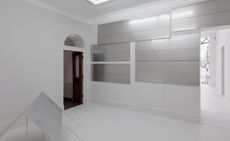 Don’t miss: Thea Djordjadze’s site-specific sculptures in London
Don’t miss: Thea Djordjadze’s site-specific sculptures in LondonThea Djordjadze’s ‘framing yours making mine’ at Sprüth Magers, London, is an exercise in restraint
By Hannah Silver Published
-
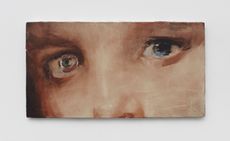 ‘Accordion Fields’ at Lisson Gallery unites painters inspired by London
‘Accordion Fields’ at Lisson Gallery unites painters inspired by London‘Accordian Fields’ at Lisson Gallery is a group show looking at painting linked to London
By Amah-Rose Abrams Published
-
 Fetishism, violence and desire: Alexis Hunter in London
Fetishism, violence and desire: Alexis Hunter in London‘Alexis Hunter: 10 Seconds’ at London's Richard Saltoun Gallery focuses on the artist’s work from the 1970s, disrupting sexual stereotypes
By Hannah Silver Published
-
 Wayne McGregor’s new work merges genetic code, AI and choreography
Wayne McGregor’s new work merges genetic code, AI and choreographyCompany Wayne McGregor has collaborated with Google Arts & Culture Lab on a series of works, ‘Autobiography (v95 and v96)’, at Sadler’s Wells (12 – 13 March 2024)
By Rachael Moloney Published